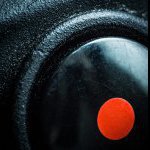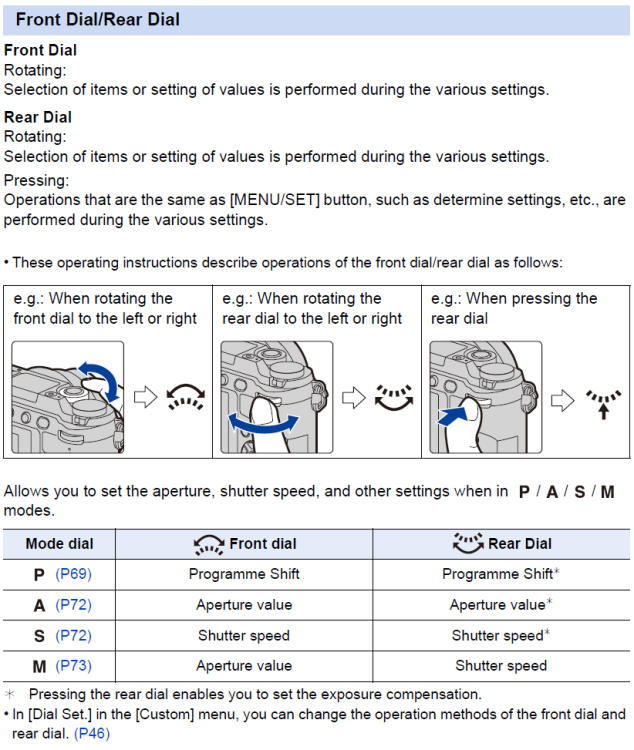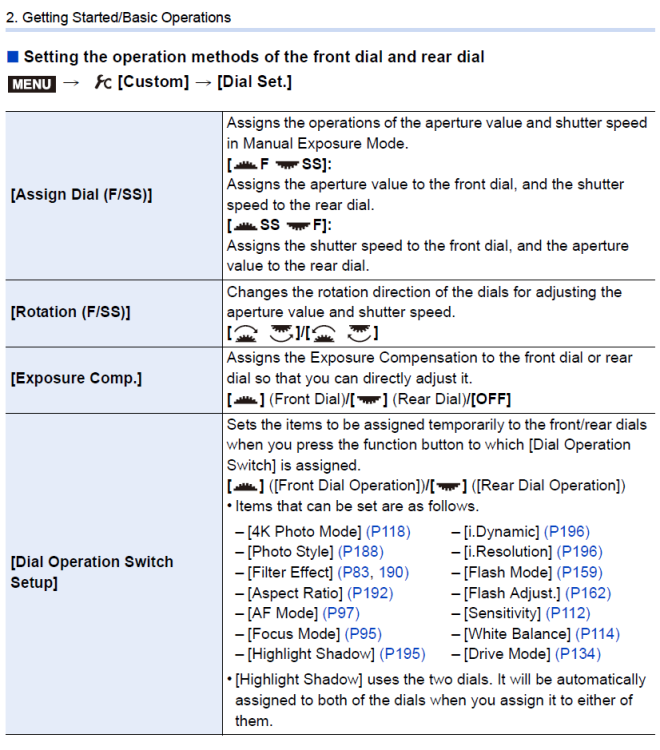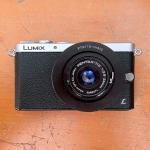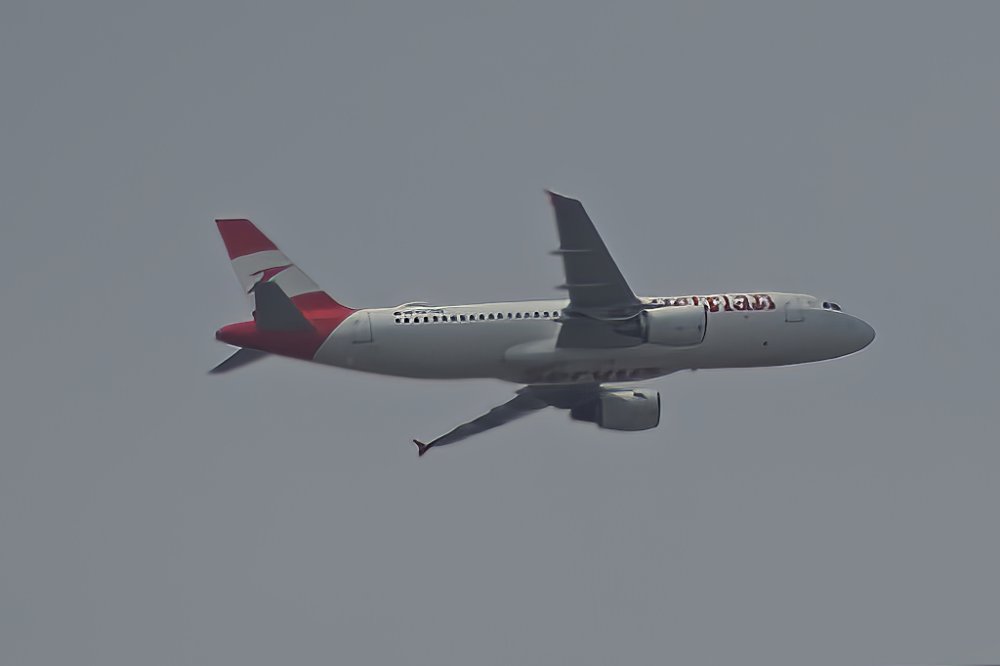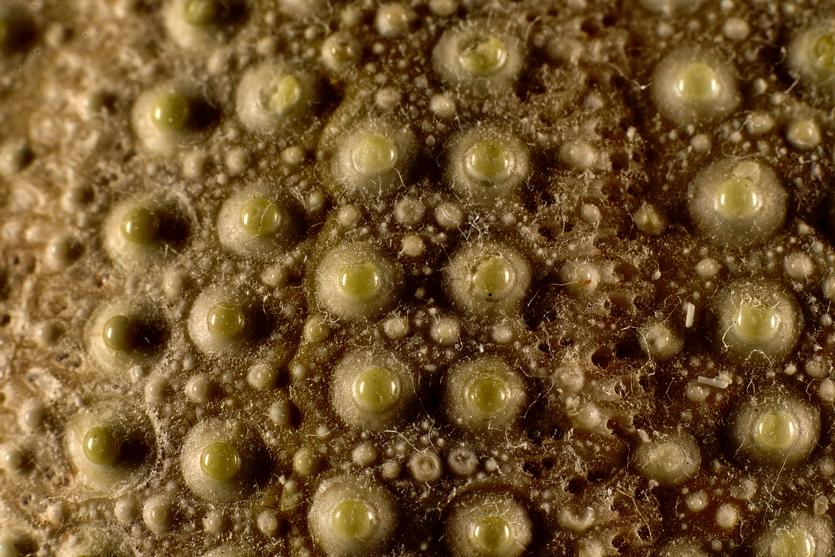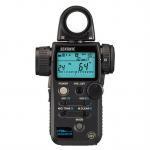All Activity
- Past hour
-
I have a lot of respect for the skill involved with shooting weddings. I did two about ten years ago and decided that it wasn't for me! Yeah, no thanks. I appreciate you mentioning that. I'm not willing to take that risk! I bit the bullet and ordered a used R5C. $2400 a 22K shutter count, and a cage included. I don't expect this to become my primary camera over the C70 but will be nice to have when photos are also needed. I think I might re-buy the SmallRig v-mount plate so that I can power it off of my Intellytech mini v-mounts, and then just uncouple it from that setup and run it off of the regular battery for stills (I really like an EVF for stills). In the interest of keeping things small and lightweight, I probably will not bother with a separate monitor.
-
and would suit me very well…if it just had a better rear LCD, but they cheaped out on it and lost a potential sale because of that. And I am not the only one. It defies all logic and sense to me and is the equivalent of a company putting their middle finger up at the potential purchased and saying, “don’t buy it then”. OK I won’t and that’s a bigger loss to you than it is to me. There are sub €1000 cameras with a better rear LCD. I don’t pick holes in shit for the sake of it either and this in every other regard was a very strong contender for me and they blew it 😏
-
@QuickHitRecordI seen the R7 mentioned in this thread. And while it may not overheat, the reports of failure rate of its mechanical shutter that I was seeing on one of the bigger R7 FB groups in a 2-4 month span (I was researching it as a potential C cam to my two R5Cs) was enough for me to say, no. This coming from a cam that still isn't even three years old (released June 23rd 2022). All that to say, if you do decide to go with an R7 then do not buy it used - definitely buy brand new with an extended warranty. As far as price goes the new R50V ($650US) seems like it could be a valid option for your needs.
- Today
-
You'll have to pony up for the more expensive models to avoid over-heating. I've tested my R8 in all its video modes and 4K will make the camera over-heat after long sessions or make the heat bars reach very close to it overheating and shutting off (If I'm shooting long-interviews with the R8 I just shoot FHD which is very good). I'm sure the R7 and R6M2 models have much better heat dissipation design. The R8 has none. As for the bulkier 1D models I'm sure they are almost bullet proof, but they have 30m recording limits.
-
Well after watching a couple reviews my opinion has drastically changed I must admit. While the above issues remain, if you compare it further to the FX3/A7Siii this FX2 actually brings substantial improvements as a hybrid camera. The fact you get 33MP, tiltable EVF, video/stills switch, and mechanical shutter makes it a quite usable photo camera as well. And on the video side, the 7K downsampled image makes it sharper and allows S35 4K which you don't get on the FX3. Great for adapting S35 lenses. I also like the new S-Log3 stills mode, great for consistent shots while filming. The EU price and poor rolling shutter is still a problem but if/when price comes down, this could actually be a great hybrid within the Sony ecosystem and a very valid alternative to FX3. I could see myself picking one up at the USD price.
-
Should try it as a hybrid shooter doing full photo and video as a one man band. Some say it can't be done. The evidence of my website and the last 20+ years says otherwise! The key word there was 'logistics' along with; planning/a routine that is tried and tested, plus a shit ton of trial & error prior! Took 6 years to go from scratch to being comfortable with it and then just been refining ever since. And continuing to do so...
-
As 'newfoundmass' suggested, use the touch screen, or (probably, for movie mode, as the manual doesn't make it clear if it applies to movies as well as stills) you can use/customise the functions of the front and rear dials:
-
Sacrilege! 😁 How come not the "hacked" CineD? Doesn't it offer a bit more latitude? Also out of curiosity: which variable ND are you using? I'm still using 3 and 6 stop fixed ones as I'm hesitant to go with a variable one due to potential image quality loss.
-
In terms of noise R5C is definitely better, sharpness is pretty much a draw from my own perspective. AF on R8 is more clever for sure, there are times where R5C could lose tracking and focus on the background instead but R8 will still be lock on target. I know a wedding guy he used to have C70 and R5C, but later sold his c70 for 2 R7, the weight saving is quite huge, battery on R7 last ages too, u can easily have over 2hr of 4k25p in one charge. Just R7's 4k50p is subsampled so won't be as sharp as R8/R6ii, but for client they can't tell anyway ha. I just use the touch screen to disable AF on R8, on R5C u need to assign a button to stop AF, I haven't tried assign a button on R8 to disable AF.
-
 John Matthews reacted to a post in a topic:
How do you do video mode on the gx80?
John Matthews reacted to a post in a topic:
How do you do video mode on the gx80?
-
 John Matthews reacted to a post in a topic:
How do you do video mode on the gx80?
John Matthews reacted to a post in a topic:
How do you do video mode on the gx80?
-
 John Matthews reacted to a post in a topic:
How do you do video mode on the gx80?
John Matthews reacted to a post in a topic:
How do you do video mode on the gx80?
-
I don't know how you wedding shooters routinely manage these kinds of logistics! This is interesting. Thank you for sharing! I hadn't really considered the R7 because I don't love the way that Canon has implemented an all-or-nothing approach to IBIS and IS. But I didn't realize that it was actually pretty good on the overheating front. It's worth a second look. Since you own both the R5C and the R8, is the 24P 4K from the R5C that much better? Is the DPAF better on the R8? And is there a way temporarily disable autofocus on the R8 by holding down a button? Good to know!
- Yesterday
-
 newfoundmass reacted to a post in a topic:
How do you do video mode on the gx80?
newfoundmass reacted to a post in a topic:
How do you do video mode on the gx80?
-
You should be able to change it with the touch screen.
-
In general, when shooting video you don't really want SS, fstop, and ISO changing. Best if they stay where they're at. The ideal way to control exposure, as others have said, is to work with ND filters. I absolutely hate the look of fast shutter speed video. In fact, if I'm shooting, say, 30p, I'll even slow the shutter to 30 as well. It's just a look I like. 180 rule? No thanks, not for me. OTOH, if that high speed shutter judder doesn't bother you, then you can always allow that to be the variable that changes your exposure. It's the default variable for phones shooting vid so it's kind of a 'thing' now anyway.
-
Something that's worth noting/remembering is that the 'Flkr Decrease' setting can be used to fix the shutter speed to 1/50, 1/60, 1/100 or 1/120 (180 degree shutter for 24/25, 30, 50 or 60 fps video) when you press the video record button in stills/photo mode (which forces the camera into 'P' mode, irrespective of what the stills/photo setting is). This workaround gives you shutter priority video with auto aperture and, if you want, auto-iso - it's 'photo' P mode with fixed shutter speed, basically. I find this really useful for 'instant hybrid' shooting - press the shutter button to take stills (in whatever mode you have set) or press the video record button to shoot shutter-priority video - no need to move the mode dial. From the manual:
-
 QuickHitRecord reacted to a post in a topic:
Which Canon Mirrorless (and DSLR) cameras don't overheat when recording 4K?
QuickHitRecord reacted to a post in a topic:
Which Canon Mirrorless (and DSLR) cameras don't overheat when recording 4K?
-
 QuickHitRecord reacted to a post in a topic:
Which Canon Mirrorless (and DSLR) cameras don't overheat when recording 4K?
QuickHitRecord reacted to a post in a topic:
Which Canon Mirrorless (and DSLR) cameras don't overheat when recording 4K?
-
 QuickHitRecord reacted to a post in a topic:
Which Canon Mirrorless (and DSLR) cameras don't overheat when recording 4K?
QuickHitRecord reacted to a post in a topic:
Which Canon Mirrorless (and DSLR) cameras don't overheat when recording 4K?
-
 QuickHitRecord reacted to a post in a topic:
Which Canon Mirrorless (and DSLR) cameras don't overheat when recording 4K?
QuickHitRecord reacted to a post in a topic:
Which Canon Mirrorless (and DSLR) cameras don't overheat when recording 4K?
-
 majoraxis reacted to a post in a topic:
Fav AI outcome out there...
majoraxis reacted to a post in a topic:
Fav AI outcome out there...
-
This is correct. Use a variable neutral density filter to adjust the exposure. If you REALLY want auto ISO, you need to also accept shooting in 30fps because this is only achievable in 4K photo mode.
-
None of those lenses have apertures to control via the lens. They have focus rings, unlike the 12-32. With the 12-32, put the camera into manual focus mode and there will be a [AF] button in the bottom right corner. Tap it and the lens will focus on that spot- this is your friend. You can also just tap where you want to focus and it will also focus on the object. All of this can happen in MF mode and without any physical focus ring on the lens... if that makes sense.
-
 Emanuel reacted to a post in a topic:
How do you do video mode on the gx80?
Emanuel reacted to a post in a topic:
How do you do video mode on the gx80?
-
Thank you for all this extremely helpful advice!! This is so helpful. It is just stunning how much knowledge comes together here, in this forum. But how do you achieve that, provided it is a 4/3 lens without an aperture ring (like my olympus 17 & 45 mm 1.8 and the 12-32 kit lens)? As I understand it, the only mode that allows for locking the shutter at 1/50 and being able to adjust the aperture via the camera is the manual mode under the movie mode - which does not allow auto iso, right? (Strangely, the M mode for stills allows for auto iso). While using standard, do you leave the "sharpness", "saturation", etc. as it is, or would you recommend to dial them down a bit? I'll try that, keeping in mind that the standard profile offers some flexibility to adjust the colors in post. The correction that you have shown above are impressing. I have always used the touch focus with AFS. This is one of the best features of this camera, as it is incredibly responsive and accurate. I got the e-mii for some time after selling the gx the first time, and the gx fares far better in this regard.
-
Hi and thank you! Yes I agree with all of what you say. I have been reading a lot that mirrorless cameras will be able to focus at any given aperture through the range unlike DSLR's which typically won't focus after f8. I can get round this at about f16 using the Sigma macro by engaging the lights on the MF-12 flashes to focus which is useful for skittish insects and invertebrates like bees. You spoke about diffraction which starts at around f11 - f13 and atmospheric "haze". Sure no matter what you do with sharpening things will still look pretty warped? This is a good example of *atmosphere* which I took a while back when I was trying to get used to the 200-500mm lens I have - the plane was shot at 450mm f/8: I don't have any experience with TC's but the closest thing I do have experience with is some Kenko extender tubes which when used with my Sigma gave me 1.4x magnification. The result was incredibly soft but I was able to recover it using a sharpening technique in GIMP by creating an overlay sharpening layer. The image below of the sea urchin shell was in fact shot with a 50mm f/1.8 that came from the Nikon FM originally that my parents bought before I was around. I completely agree that any lens with a TC will not have the same properties that a lens of a similar focal length will have. I'm just trying to think "light" and more affordable and practical. After all the Canon 1200mm for example is around 20k Euro. I realize that one won't be able to do everything but trying to find that balance between things is the key. If the 100-500mm is going to be sufficient and more practical then the 200-800mm and offer better image quality then that's going to be the solution for me. With a 1.4x TC it will offer a similar FoV to my D500/500mm f/5.6 combo, though the 200-800 without a TC will do the same thing. Of course that's where things start to get confusing for me a little of which direction to go in. Due to the light loss I also think it's better to use a TC with a much faster lens. Say a 400 f/2.8 and that way things won't be "so" degraded. When you say that I "haven't thought things through properly", I realize that I don't have much experience due to many factors. My only real wildlife experience is birds at various nature reserves I used to volunteer for which were pretty much the same thing and nothing very interesting and of course I had set times where I was there. Originally I started out wanting to do astrophotography which led me to my Pentax and as a result I have plenty of nightscape experience as that's pretty much all I had access (due to various reasons but most of all I live in the center of a big city and the surrounding area has no natural land around it as it's all built up with towns and more cities). The nearest place is around 5-8 hours drive away. Basically I'm really keen to get more into the other things and traveling off the beaten path away from civilization is going to help me achieve that. Once I have some experience in different environments and know what works for me I'll be fine 🙂
-
Canon R6II and R7 can record 4K for long hours without overheating, on my ex R7 the only time I see heating bar was during summer inside a clear tent which is like greenhouse on stereoid, even DJ's equipement got overheated, but R7 still only 4 bars out of 10 so pretty alright. R8 on the other hand will need a fan to go through summer outdoor for long 4K recording, for broll it was fine though, just you will see the the overheating bar pretty often in video. The 4k50P quality is really great, but now I got R5C the quality is even better, R5C is probably the closest to C70 in terms of noise performance in clog. I also got powershot V1, this one can record 4K for hours without overheating, but the bar did went to 5 at one stage, that was because the location is next to the heater. It is a nice C cam for wide and as a pocket cam. So my current setup is R5C/R8 and V1 for 3 cam and 3 60/40w cob lights with battery for wedding, with this setup I only need 1 pelican case, 1 backpack and 1 bag for tripod/stand. I used to have the R5 as well, after their latest firmware I haven't seen the overheating warning at all, even I shot 8K broll in outdoor summer. One thing with Canon is on the EOS side, only R5II/R5/R5C/EOS R can have hdmi out + internal recording + internal screen on, all other models the screen either go black if recording internally or have internal screen but can't record internally if you are connected to hdmi
-
I have the same policy in that a job isn't just a job as in all jobs are the same, but some do not fit into a standard box or coverage. In my genre of weddings, having everything take place in one single location is a completely different beast to; bride getting ready at X, groom at Y, ceremony at A, reception at B, which can make for HUGE logistical issues.
-
Nikon Z8 or Canon R5C to combine stills and video
Ilkka Nissila replied to kayasaman's topic in Cameras
A 200-800 may be appropriate for wildlife documentary but adding TCs to an f/9 long lens to increase the size of long-distance subjects in the image is unlikely to be very useful. The aperture with a 2X will be f/18 and usually one starts to see significant blurring due to diffraction at f/13 and smaller. The best use of TCs is generally for increasing the magnification at close to intermediate distances where the image quality degradation is not significantly present. At long distances, especially when photographing over water, the temperature variations across layers of air, and humidity in the air, distorts and blurs the image and the longer your focal length, the more obvious it becomes. It's almost always better to be in a location which allows the wildlife to get closer and then shoot without a TC. I'm saying "almost" because there are situations where the light is good only when photographing subjects at longer distances and at closer distances the light is blocked by trees, hills etc. so in that case the longer focal length is needed to get the good light (but atmospherics still apply). In a video, the small aperture may not be a critical issue as the shutter speed is typically lower than in stills (e.g., 1/50s to 1/100 s when at 25 or 50 fps), bright sunlight giving f/16 1/100 s at ISO 100, for example. However, bright sunlight can lead to harsh shadows and in order it to look good, it should come at the right angle (which is usually low above the horizon). At low angles the sunlight is attenuated more by the longer distance of travel in the atmosphere. This generally improves the quality of light on the subject but the quantity is reduced. For stills, usually people want high sharpness in the details of the animal which can dictate a faster shutter speed such as 1/400 s or even 1/3200 s for birds-in-flight. A lot of the time there are clouds and in many cases the most atmospheric and beautiful light is before and after sunrise and sunset, and in those conditions you might be at ISO 25600 even with a f/5.6 lens. A lot of wildlife are the most active in these time windows. So the best times-of-day for photography might not be possible with an f/9 lens let alone f/18. Having the skills to pan effectively make it possible to do some shots successfully in lower light by allowing the subject to have controlled movement blur (sharp head, blurry wings, landscape blurred into trails) but this requires great skills. Even though some softness can be corrected with sharpening and noise-reduction algorithms, garbage-in-garbage-out still applies. A lens with a really small aperture means usually elevated ISO and increased noise. A 200-800+2X will have significantly reduced contrast over a native 1200 mm lens, for example, and if the noise is increased by the need to use fast shutter speeds and higher ISO, then the deciding parameter (contrast divided by noise) in terms of the clarity of subject details will be reduced from multiple factors: atmospherics, low-light-noise, reduced contrast due to use of imperfect optical system (with TC), all working to make it harder to get high-quality images. I'm not saying it's not a good idea to use a lens like the 200-800 for the stated purpose; especially for video with the camera+lens on a tripod and fluid head, it may be a very practical compromise for travel-based wildlife photography, but one should have realistic expectations and when people talk about 2X use to magnify long-distance subjects with a small-aperture lens, then I can't really but feel that the OP hasn't thought it out through and might not have a lot of experience with very long lenses. I think a lens like the 100-500 is much more travel-friendly and might give a greater pleasure of the experience but it also requires you to be closer to the wildlife or select subjects that work with that range. It might be a good idea to take both the 100-500 and 200-800 and use the 200-800 when you feel up to it (traveling can be exhausting) and when photographing subjects which require the reach while the 100-500 can be carried along more casually and with other lenses. For video I think fluid head and tripod give the best results when it comes to these focal lengths, but a fluid head won't easily adopt to regular photography with shorter focal lengths such as landscape in low light. A 1600 mm lens is going to be tough to keep steady no matter what gear is used. -
Interesting. Though for narrative, there are lots of long breaks. There are breaks during the b-roll I shoot too, but I'm often in the hot sun. I'm kind of tempted to give the R8 a try. Josh Sattin's videos suggest that it can roll for over two hours continuously in 24P. That goes down significantly in 60P, but I tend to shoot about 70% of my b-roll in 24P. I've been trying to do the same. Four years ago, I was lugging around a pair of 575w HMIs(!). Now I have a rule that if a client wants more than what I can fit on my cart, they need to budget for my gaffer too. But getting hired for photo + video is always a problem for me because it means multiple bodies, multiple lenses, etc. I've held off because I don't think the quality is really there, but at this point I am willing to make some sacrifices.
-
GX80/85 here too (they are the same camera, varies the geographic version, EU or US). Just arrived from street back to my Lisbon base, 5 minutes ago, with one in hands... as casual shooter for covering this: https://www.portugal.com/activities-experiences/the-ultimate-guide-to-the-biggest-party-in-lisbon-santos-populares-and-santo-antonio-2024-edition/ + FX30 with my new Sigma 16-300mm f/3.5-6.7 attached to 1.5x Clear Image Zoom and no complaints on ISO as far as low light concerns under street bulbs by night, go figure for 4K 25p always under ISO 1000; + Osmo Pocket 3 which didn't leave the case this time and it's one of my favs; + Insta360 One X2 in my shirt pocket, despite its terrible low light/night shooting performance other than my beloved Osmo, the same, never came out... Its small form factor with the cheap kit 12-32mm f/3.5-5.6 lens makes it unique. Didn't even feel the need to use my Osmo, can you imagine? And Panasonic batteries last and last... A single battery for all night long, two batteries for Sony. Follow @kye's entry for everything else, it's for free and you have there more with him than whoever else here or anywhere out there ;- )
-
2 years ago, I bought a cheap cart off Amazon and use that to lighten the load. 1 year ago, I revised some of my kit to get the weight down. This year, I revised it even further. And guess what is happening next year? Yep, reducing it again. Providing you can still do what you need to do without compromise, or at least compromise that you can live with, less is more. That tripod that is ‘the best’, well maybe it is, but can that lighter alternative do the same job? Ditto that body, that lens, that light… In less than 2 years, I reduced both my stills and video cameras, in hand weight by about half with changes of body, lenses and accessories. But Canon, no idea, but I would suspect none of the recent one’s do. At least not under normal circumstances.
-
For B-roll and photos, I'm not sure that any modern Canon is in any danger of overheating. I've used the original R5 as b camera for narrative, rolling every second alongside the C70 I was using at the time. It never even showed any signs of distress. That was doing 8K raw. If you use the 4K standard mode, it'll be even less of a problem. It would definitely not be a camera that I'd choose for rolling long takes in 8K, but most of its reputation for overheating is Canon's fault for having such stupid firmware when the camera was released.

